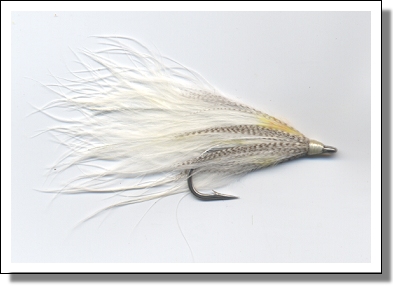 Just taking a break from writing up my newsletter for April. In it I try to answer some of the more frequently asked questions that have been put to me over the years. Since many of my blog-readers may not receive the monthly fly fishing newsletter, I thought I’d post the questions and answers here as well. If you’d like to receive a newsletter, by the way, please sign up for it on the home page.
Just taking a break from writing up my newsletter for April. In it I try to answer some of the more frequently asked questions that have been put to me over the years. Since many of my blog-readers may not receive the monthly fly fishing newsletter, I thought I’d post the questions and answers here as well. If you’d like to receive a newsletter, by the way, please sign up for it on the home page.
Frequently Asked Questions
1. (and this is the most-frequently asked question)
Do you personally tie all the flies that you have for sale?
Yes, I do personally tie each and every one. Which is why I sometimes get behind a bit in filling orders, especially during the busy winter months (January and February especially), when I’m traveling a lot. If you order selections of flies, there’s generally no delay in getting these out; I usually have most of the selections on hand. It’s the orders for individual flies that take a bit longer since I often have very few individual flies in stock and must tie each one to order and I tie each individual order in the order in which they arrive. Since I’m a fairly slow and methodical tyer I may tie up only about three dozen flies on an average day (that is if my eyes and back don’t act up on me, in which case I’ll tie fewer). Eventually, though, all the flies get tied and everybody’s patience is rewarded. The best time to order individual flies or those flies not offered in selections is generally April through July and again in September and October, when I’m traveling less and I have more time to tie.
2. Do you have a shop?
No. Because of the web site, many people make the assumption that I have a shop or operate a large fly tying consortium but this is far from the truth. A laugh, really, since there’s just me, myself, and I to do all the tying, packaging, writing, and all the other chores that need to be done.
3. Do you make a good living doing what you do?
An honest answer to this is: Hell, no!–BUT I make a great life.
4. How long have you been tying flies?
I was taught to tie my first fly by the late, great Ted Williams of the Boston Red Sox. This was in 1956 or 1957 (can’t remember now exactly which year). I was just a young lad at the time and Ted was my idol. At the time I had never seen a fly tied before but I figured that if Ted was interested in fly tying, this was something I’d like to know more about. I’ve been tying regularly ever since.
5. Where do your fly-tying ideas come from? Or, another variation of the same question, What inspires you to come up a certain pattern?
These are difficult questions to answer meaningfully. I’m an habitual experimental tyer and my tying area is often a chaos of materials. Out of this chaos, I am sometimes moved to create order. Ideas come to me most often when I’m bored with the repetition of tying a single pattern over and over again, flies that require no thought to their construction or design but only rote mechanical skill. It’s then that my mind is free to range over the possibilities that exist within all the different materials spread out before me. Once I focus on a particular material (say a pheasant feather), I try then to imagine all the particular uses to which that feather can be put. And so on.
It should be said at this point that I have hundreds of ideas in the course of a year–but only one or two of them ever turn out to be GOOD ideas; the others not so good, some downright foolish. But it’s the pursuit of the good idea–that perfect expression of a perfect fly, for instance–that keeps me involved, enthused, and searching–and occasionally satisfied. After many years of tying, the successes remain and the failures are forgotten.
 I think if Jack were still alive he would be making a lot of tying videos. It was something we talked about and I wish we’d done more of it. I was reminded of this today when I was talking on the phone with a tyer from Wisconsin, describing one of Jack’s signature patterns, the Soft Hackle Streamer. It’s a fly that is at once very simple and amazingly effective. It can and has caught just about everything, from bonefish to catfish to tarpon to carp.
I think if Jack were still alive he would be making a lot of tying videos. It was something we talked about and I wish we’d done more of it. I was reminded of this today when I was talking on the phone with a tyer from Wisconsin, describing one of Jack’s signature patterns, the Soft Hackle Streamer. It’s a fly that is at once very simple and amazingly effective. It can and has caught just about everything, from bonefish to catfish to tarpon to carp.

 Just taking a break from writing up my newsletter for April. In it I try to answer some of the more frequently asked questions that have been put to me over the years. Since many of my blog-readers may not receive the monthly fly fishing newsletter, I thought I’d post the questions and answers here as well. If you’d like to receive a newsletter, by the way, please sign up for it on the
Just taking a break from writing up my newsletter for April. In it I try to answer some of the more frequently asked questions that have been put to me over the years. Since many of my blog-readers may not receive the monthly fly fishing newsletter, I thought I’d post the questions and answers here as well. If you’d like to receive a newsletter, by the way, please sign up for it on the 